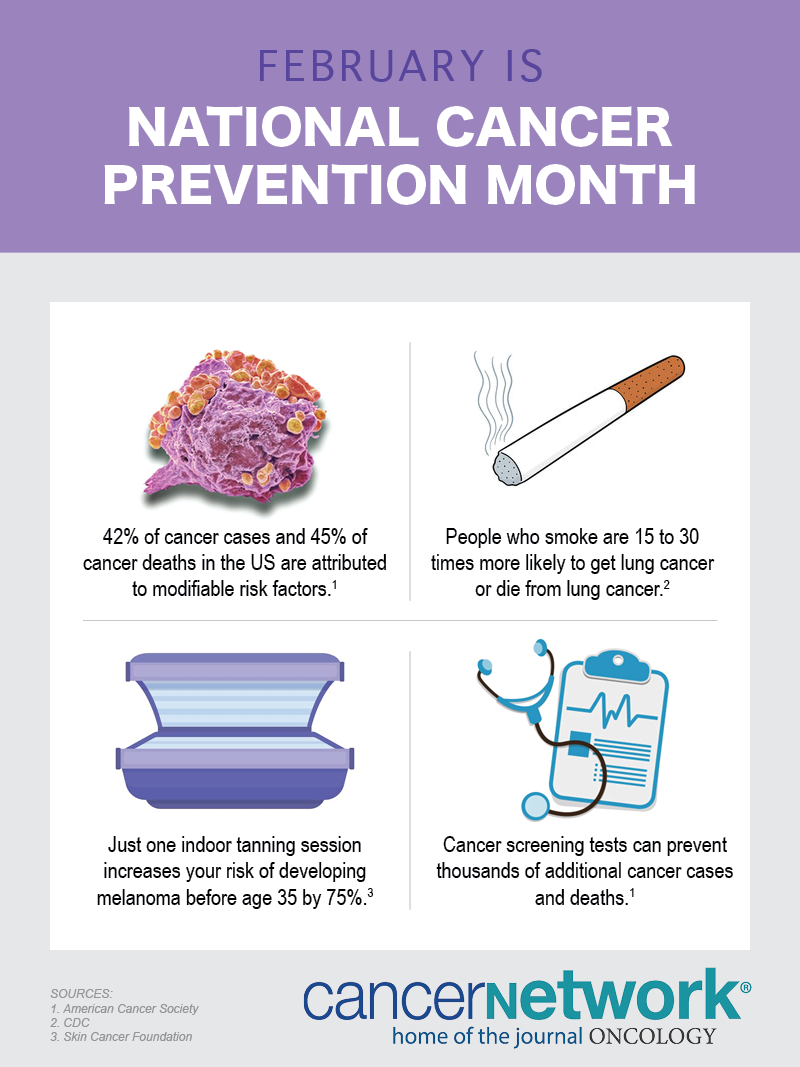National Cancer Prevention Month: What You Need to Know
With February being National Cancer Prevention Month, here are the latest updates in cancer prevention.

According to a study conducted by the American Cancer Society, at least 42% of newly diagnosed cancers in the US, which translates to about 750,000 cases in 2020, are potentially avoidable. This includes the 19% of all cancers that are caused by smoking and the 18% caused by a combination of excess body weight, alcohol consumption, poor nutrition, and physical inactivity.
With February being National Cancer Prevention Month, here is a round-up of the latest news and updates that focus on the role of cancer prevention:
- Over the next century, successful implementation of the World Health Organization (WHO) elimination strategy could reduce cervical cancer mortality by almost 99% and save more than 62 million women’s lives.
- A recent study determined circulating tumor cells were associated with melanoma relapse, suggesting that this form of liquid biopsy could help identify patients who would benefit from adjuvant therapy.
- According to researchers, when individuals quit smoking it not only stops further damage from accruing, but it also may lead to the reawakening of lung cells that were not damaged by tobacco carcinogens.
- A new AI system could possibly surpass human experts in the prediction of breast cancer, potentially leading to enhanced screening results and earlier identification of the disease.
- Online and digital videos were found to play a key role in cancer education, leading to increased knowledge and interventions, however access for vulnerable populations needs to be improved.
- Engaging in the recommended amount of leisure-time physical activity (7.5-15 MET hours/week) was found to be associated with a lower risk for 7 different cancer types.
- Greater adherence to the World Cancer Research Fund (WCRF)/American Institute for Cancer Research (AICR) cancer prevention recommendations appeared to be associated with decreased colorectal cancer (CRC) risk for both African Americans and whites.
- A blood-based screening test, presented at the 2020 Gastrointestinal Cancers Symposium, held from January 23-25, in San Francisco, California, could potentially diagnose multiple cancer types earlier, includinggastrointestinal cancers across stages at high sensitivity.
Reference:
American Cancer Society. Cancer Facts & Figures 2020. American Cancer Society Website. Published 2020. cancer.org/content/dam/cancer-org/research/cancer-facts-and-statistics/annual-cancer-facts-and-figures/2020/cancer-facts-and-figures-2020.pdf. Accessed February 18, 2020.